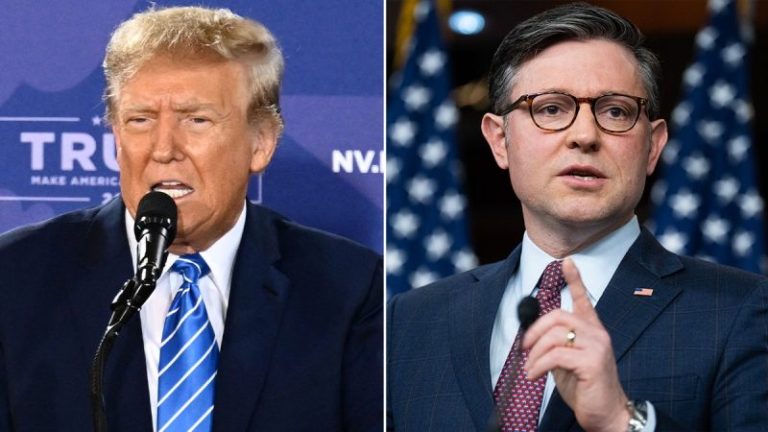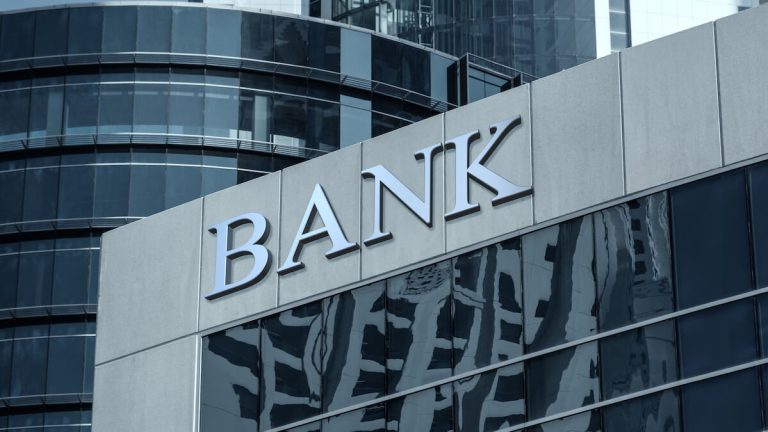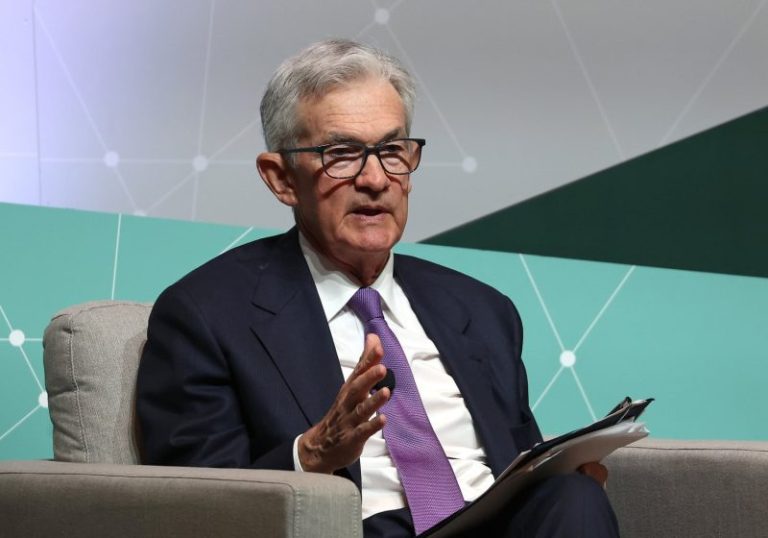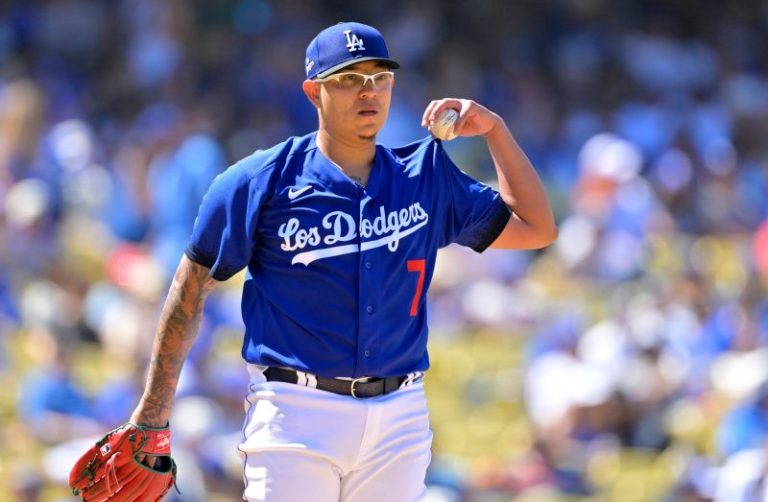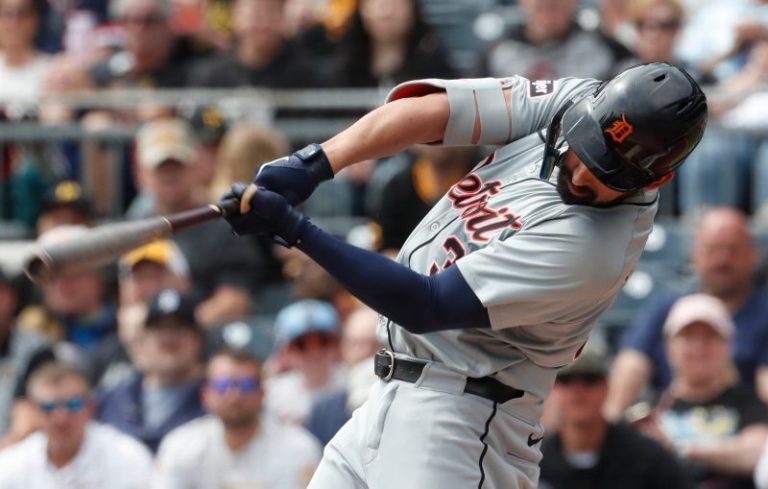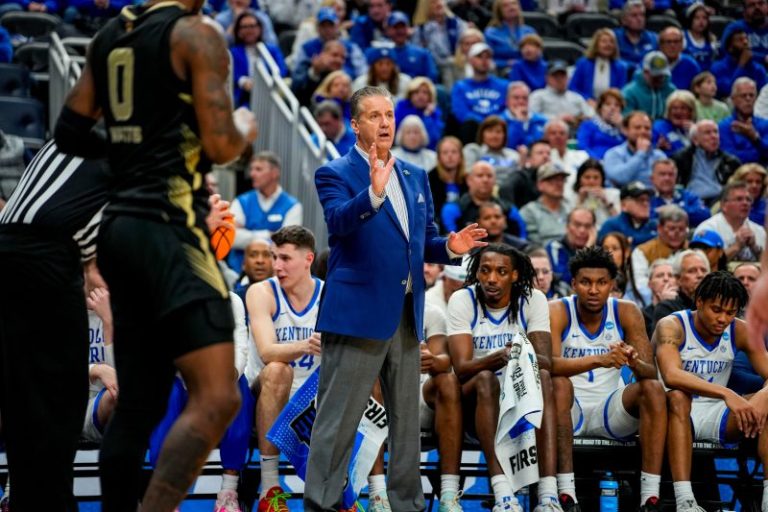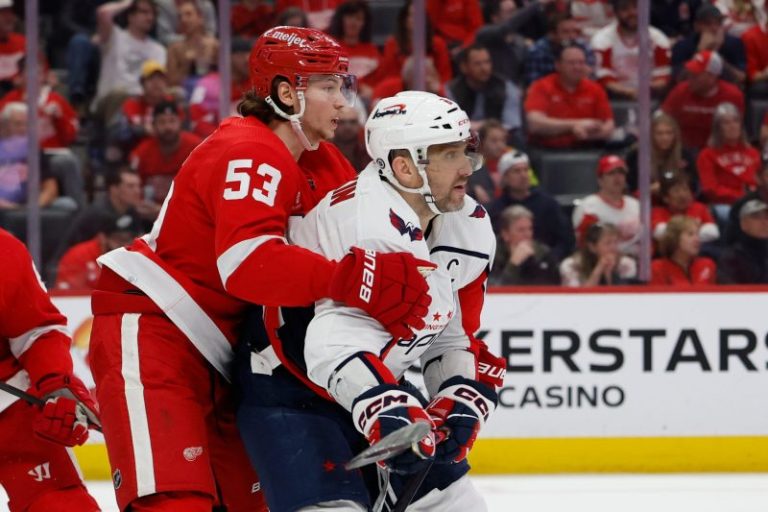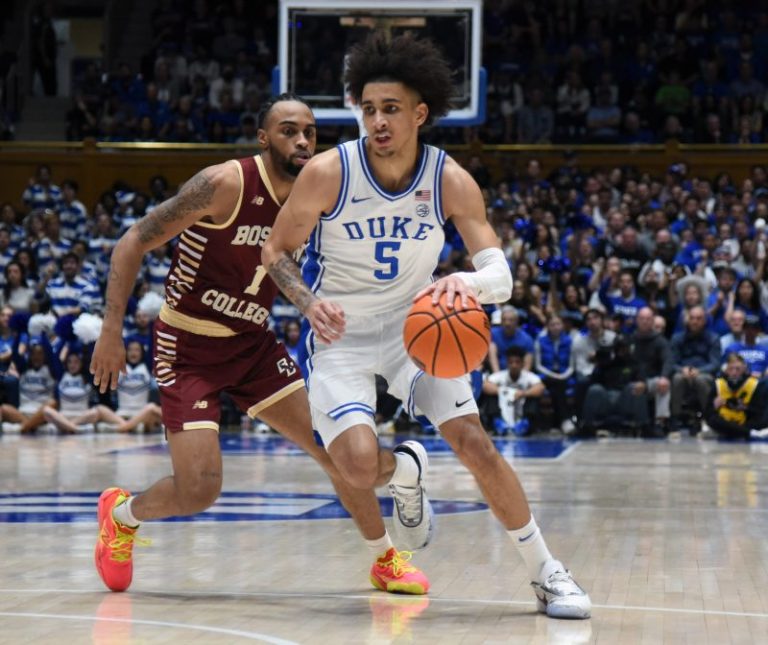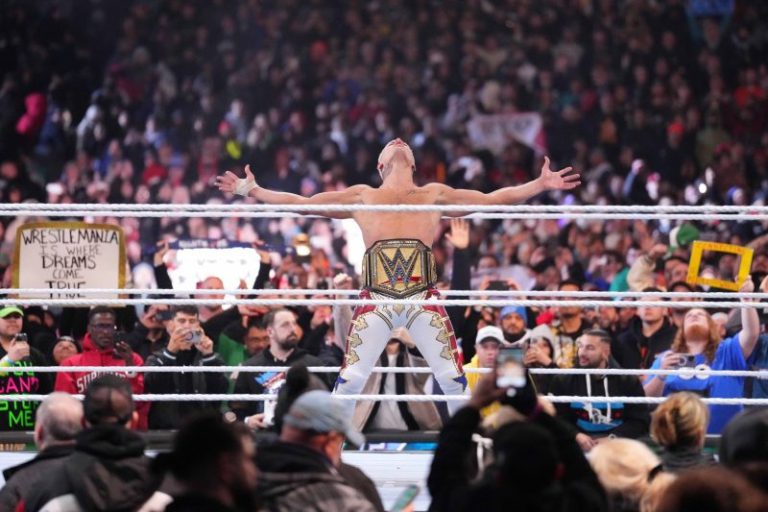The men’s college basketball season has just concluded with Connecticut again cutting down the nets. But there’s little time to savor the success of winning the national championship because it’s already time to look ahead to how the 2024-25 campaign will shake out and who will be the contenders to reach the Final Four in San Antonio.
It’s admittedly a difficult endeavor to predict next season in the era of the transfer portal and the coaching carousel still spinning with major jobs open. It’s also unclear which players will choose to return for a fifth season by using their COVID-19 waiver or who will enter the NBA draft.
For the purposes of this exercise, we’ve assumed that most players will return unless projected as a likely top selection in the draft. But there’s a lot of moving parts and none of these rankings are set in stone. Here goes nothing.
1. Duke (27-9)
A six-member recruiting class led by Cooper Flagg, Khaman Maluach, Isaiah Evans and Kon Knueppel will make Duke one of the deepest and most dangerous teams in the country. It will also be one of the youngest. It will be on coach Jon Scheyer to push all the right buttons and find the best rotation for a team that looks on paper to be very capable of winning the national title. The Blue Devils will lose multiple starters to the NBA but could have guard Tyrese Proctor and forward Mark Mitchell return.
FOLLOW THE MADNESS: NCAA basketball bracket, scores, schedules, teams and more.
2. Alabama (25-12)
Bringing back guard Mark Sears would make Alabama an SEC favorite and a contender to get back to the Final Four. Another player with a decision to make is forward Grant Nelson, who put himself on the map during the tournament. Nate Oats has three top recruits joining the mix and has already added one possible impact transfer in former Pepperdine guard Houston Mallette, an expected starter.
3. Iowa State (29-8)
The arrow is pointing up for a program that has arrived under coach T.J. Otzelberger. Iowa State will have a great backcourt led by Keshon Gilbert, Tamin Lipsey and Curtis Jones. But the Cyclones have some holes to fill in the frontcourt. ISU will lean on redshirt freshman JT Rock and Charlotte transfer Dishon Jackson while looking for more production from returners Milan Momcilovic and Demarion Watson.
4. Kansas (23-11)
Things will get better after an uncharacteristically down season for Bill Self’s program, though the Jayhawks’ chances of climbing back to the top of the Big 12 depends largely on whether center Hunter Dickinson opts to return for his final year of eligibility and Johnny Furphy stays for his sophomore year. If so, KU will have a more veteran roster buoyed by the additions of transfers Riley Kugel (Florida) and Zeke Mayo (South Dakota State).
5. Connecticut (37-3)
The Huskies are set for a rebuild. There are major losses in the backcourt (Cam Spencer, Tristen Newton, Hassan Diarra) along with the likely departures of freshman Stephon Castle and center Donovan Clingan into the NBA draft. Look for UConn to be active in the portal and build around expected returners Alex Karaban and Samson Johnson. Given the past two seasons, trusting Dan Hurley to sort this out is a wise prediction.
6. North Carolina (29-8)
First, UNC is waiting for decisions from RJ Davis and Harrison Ingram: Davis has probably achieved enough to head off to the NBA, though Ingram could use another year as the Tar Heels’ focal point to hone his skills. Hubert Davis will definitely bring back guard Elliott Cadeau while working to get reserves such as guard Seth Trimble ready for a bigger role. UNC has some major recruits arriving on campus but will definitely be active in the portal.
7. Creighton (25-10)
Baylor Scheierman is gone after a wonderful two-year run with the program. Creighton could bring back a pair of fifth-year seniors in Ryan Kalkbrenner and Steven Ashworth, with Ashworth almost certain to come back and Kalkbrenner still weighing his options. If Kalkbrenner does come back, the Bluejays can build around one of the top big men in the country. Greg McDermott also has a top-20 recruiting class on the way. And if guard Trey Alexander can be convinced to come back, Creighton will be a title contender.
8. Tennessee (27-9)
Tennessee loses three key pieces in Dalton Knecht, Josiah-Jordan James and Santiago Vescovi. Rick Barnes will have to go back into the transfer portal to find some scoring on the wing to replace Knecht. (Good luck with that.) But the Volunteers will be a veteran team potentially led by four seniors in Zakai Zeigler, Jonas Aidoo, Jahmai Mashack and Jordan Gainey. That’s a strong starting point for a team good enough to win another SEC regular-season crown.
9. Purdue (34-5)
It will be hard to imagine the Boilermakers without Zach Edey in the middle. The returners next season will be familiar, though. Fletcher Loyer and Braden Smith will be back for their third years as starters. Mason Gillis – the team’s top 3-point percentage shooter – could stay and join returners Trey Kaufman-Renn, Myles Colvin and Camden Heide poised for bigger roles. Kanon Catchings leads recruiting class big on quality and quantity.
10. Brigham Young (23-11)
The Cougars settled into the the Big 12 in their first season comfortably and look well-equipped to handle increased competition with the arrival of four teams from the Pac-12. How good they will be depends on the status of leading scorer Jaxson Robinson (14.2 ppg). His return with Fousseyni Traore and Trevin Knell along with key depth players would make Mark Pope’s team one of the best in the country’s toughest conference.
11. Baylor (24-11)
Ja’Kobe Walter and Yves Missi are expected to enter the NBA draft, but a reversal of either or both would make this rating too low. Still, the Bears will again be talented and among the best teams in the Big 12. Langston Love and Jayden Nunn will form an excellent backcourt. Jalen Bridges could be a major piece in the frontcourt if he stays. Incoming freshmen VJ Edgecombe and Rob Wright will have a big impact.
12. Houston (32-5)
How the Cougars go forward without Jamal Shead is a concern. LJ Cryer staying for another season would make the transition much smoother as he would for a strong guard group with Emanuel Sharp. J’Wan Roberts is another player able to return to bolster the frontcourt with Ja’Vier Francis.
13. Clemson (24-12)
A repeat of the Tigers’ journey to the Elite Eight will be a challenge, but a number of the key players could be back if they choose to use their extra year. That group includes standout postman P.J. Hall, as well as guard Chase Hunter and reserve forward Jack Clark. Joseph Girard III is gone, but Ian Schieffelin, voted the ACC’s most improved player in 2023-24, is also slated to return.
14. Gonzaga (27-8)
Anton Watson’s run at his home-town school is over, but the Bulldogs shouldn’t slip much. Forward Graham Ike should be back, along with the backcourt tandem of Ryan Nembhard and Nolan Hickman. Incoming Pepperdine transfer Michael Ajayi could provide another scoring option from the wing. With eight consecutive Sweet 16 appearances, it’s not difficult to assume Mark Few will be there next year.
15. Kentucky (23-10)
Who will be hired to replace John Calipari? Will the new hire be able to keep together another terrific recruiting class? Will projected returnees such as D.J. Wagner follow Calipari to Arkansas or hang around? And with as many as four players off to the NBA draft, could this roster be completely different come next season? The Wildcats will be talented but there are a lot of question marks.
16. Saint Mary’s (26-8)
The Gaels retain most of the core group that swept the WCC regular-season and tournament titles with center Mitchell Saxen’s decision to return. Aidan Mahaney should also be back along with Augustas Marciulionis and Joshua Jefferson, giving Saint Mary’s an excellent chance to go dancing for a fourth consecutive year and maybe win the league again.
17. UCLA (16-17)
The Bruins had a setback with a losing record in a rebuilding year after tournament success. They’re ready for a comeback next season. Mick Cronin has already landed guard Skyy Clark (Louisville) and Kobe Johnson (Southern California) in the portal to go with a core group of four double-figure scorers led by Dylan Andrews and Adem Bona. UCLA will have to acclimate itself to the Big Ten schedule but look to be well-stocked for the challenge.
18. Marquette (27-10)
It’s possible the Golden Eagles could return every key contributor due to the COVID eligibility year, but it’s likely that All-America point guard Tyler Kolek and forward Oso Ighodaro will be off to the next level. Shaka Smart will have a good nucleus in place if Cam Jones and David Joplin come back, but adding size up front will be a priority.
19. Illinois (29-9)
This ranking is based on the expectation that Brad Underwood will again nail the transfer portal and bring in key pieces because losing Terrence Shannon and probably Marcus Domask and Coleman Hawkins is a big setback. Ty Rodgers and Luke Goode were key contributors season and freshmen Dra Gibbs-Lawhorn and Amani Hansbury should take a big jump forward. Underwood already added from Jake Davis from Mercer and is in pursuit of others. The biggest boost could come from big man Morez Johnson, one of the nation’s top recruits.
20. Arizona (27-9)
After another tournament disappointment, the Wildcats should have another strong regular season. How good depends on what Caleb Love decides on his future with Oumar Ballo in the portal. Jaden Bradley and Kylan Boswell should form a strong backcourt and there’s incoming talent with top recruits Carter Bryant and Jamari Phillips. There will be an adjustment in the Big 12 that may take some time.
21. Wisconsin (22-14)
Forward Tyler Wahl is gone and swingman A.J. Storr has entered the portal, so coach Greg Gard has some holes to fill. But Chuckie Hepburn should be back to run point with John Blackwell and Max Klesmit joining him in the backcourt. There is returning size in the frontcourt – notably leading rebounder Steven Crowl – to make this a team that finishes in the upper half of the Big Ten.
22. Indiana State (32-7)
The Sycamores could return the entire starting lineup that reached the NIT title game, but all those players have decisions to make now that head coach Josh Schertz is off to Saint Louis. But should Robbie Avila, Ryan Conwell and the rest of the starters stick around, the Missouri Valley could be there for the taking with Drake also under new management.
23. Auburn (27-8)
The Tigers will need some retooling with Johni Broome likely to enter the NBA draft. That would leave guard Chad Baker-Mazara (10.0 ppg) as the lone double-digit scorer remaining. Aden Holloway and Tre Donaldson also are backcourt mainstays and top recruit Tahaad Pettiford brings more talent to the group. The concern is how Bruce Pearl sorts out the frontcourt. The portal might be the best option.
24. Boise State (22-11)
Boise’s the pick to top the Mountain West and maybe even win a tournament game under longtime coach Leon Rice. Chibuzo Agbo and Tyson Degenhart might test the draft and portal but are expected to come back. There’s also a fixture in the middle in big man O’Mar Stanley. Boise State’s looking to get more improvement from young guard Roddie Anderson III, who had a strong finish to his sophomore season.
25. Rutgers (15-17)
A transition season under coach Steve Pikiell will yield a nice jump up the Big Ten standings. To start, Rutgers will bring in two high-impact true freshmen in Dylan Harper and Ace Bailey, who will join a backcourt that has already added a veteran scorer in Eastern Michigan transfer Tyson Acuff. Harper and Bailey are the stars of a recruiting class that ranks in the top five nationally and will give Rutgers a huge influx of talent and athleticism.
This post appeared first on USA TODAY

